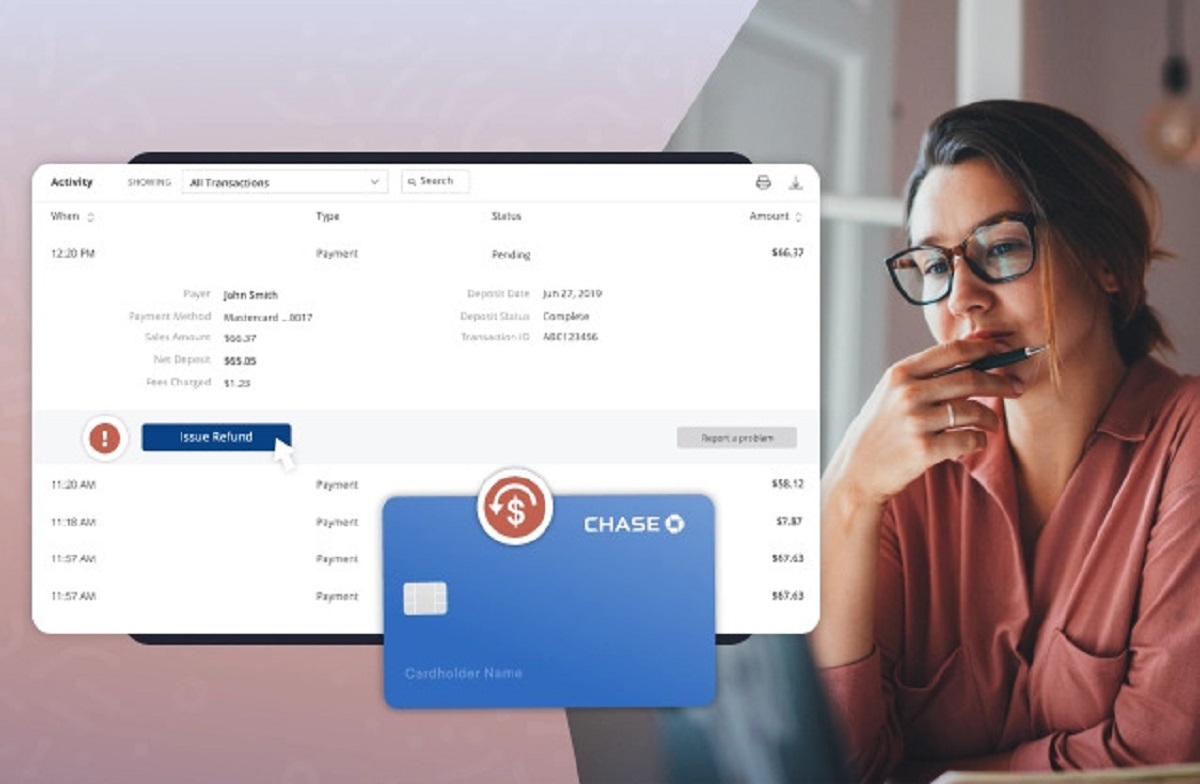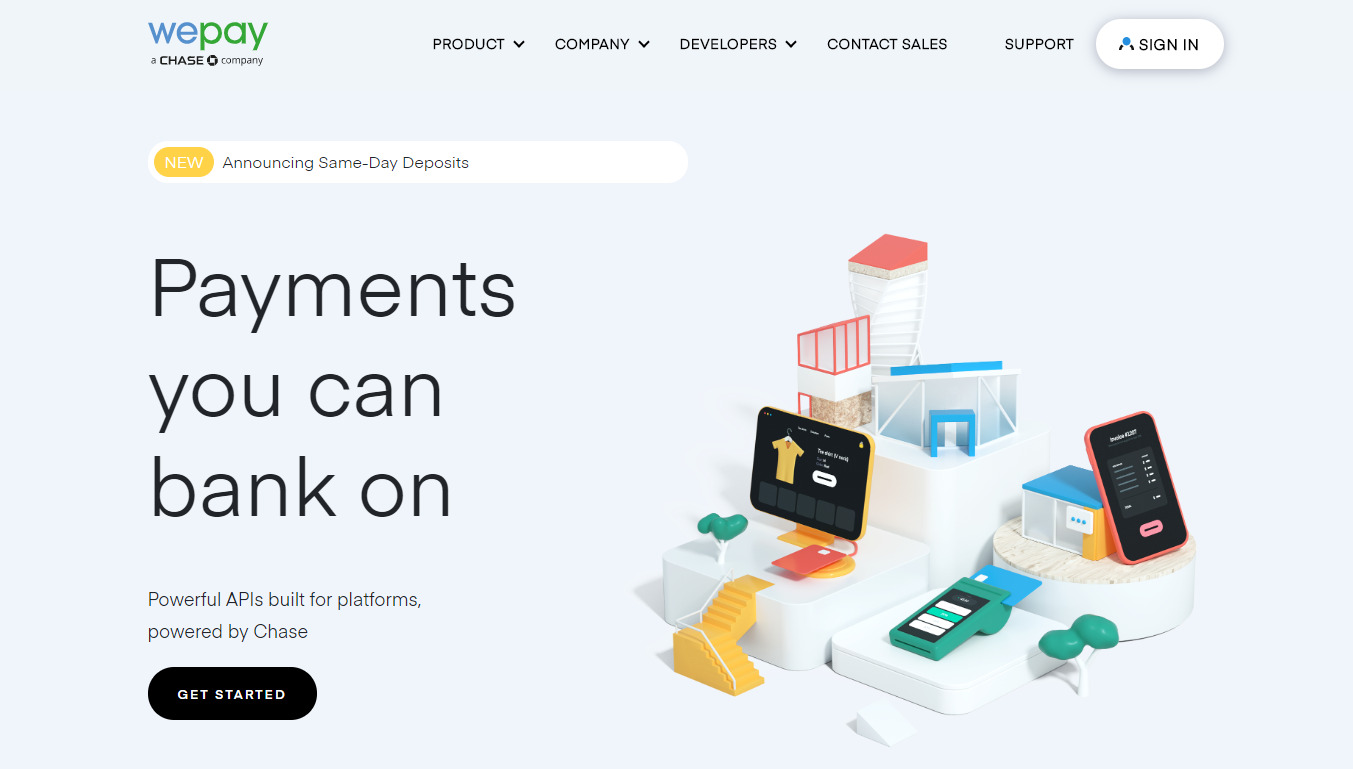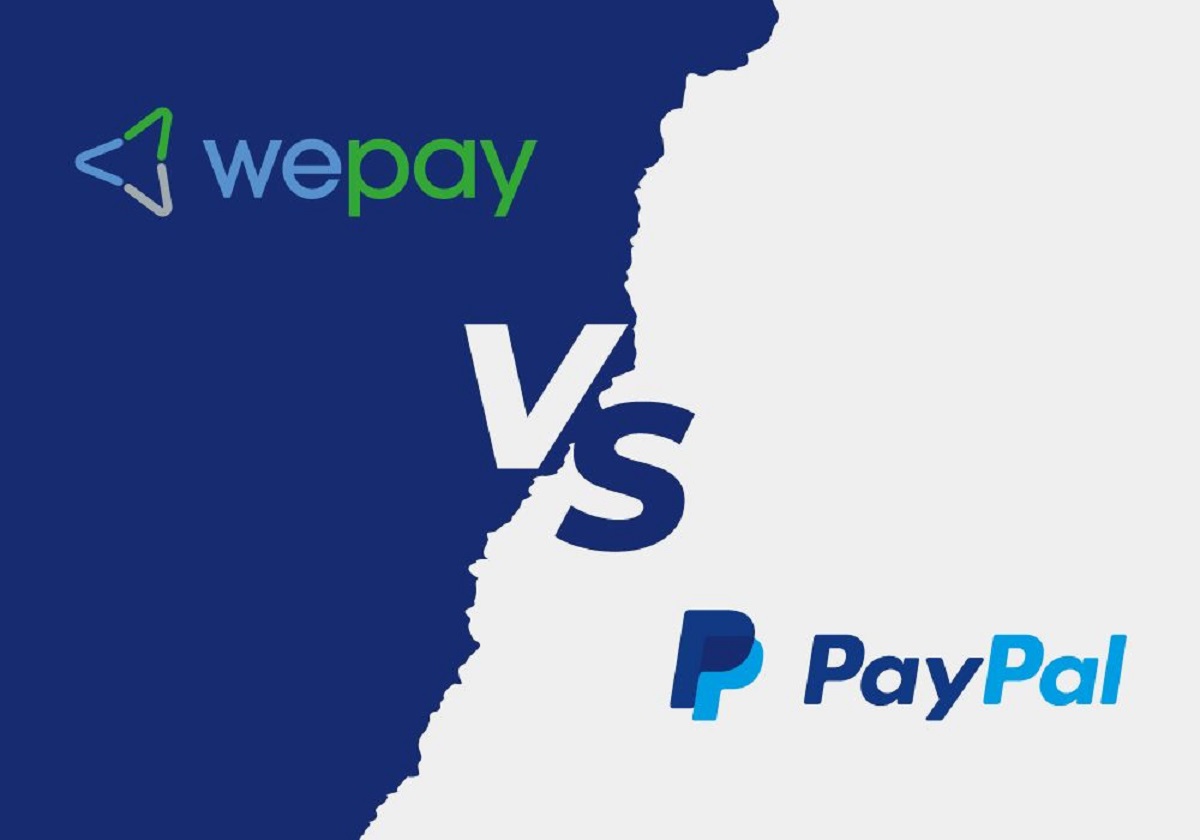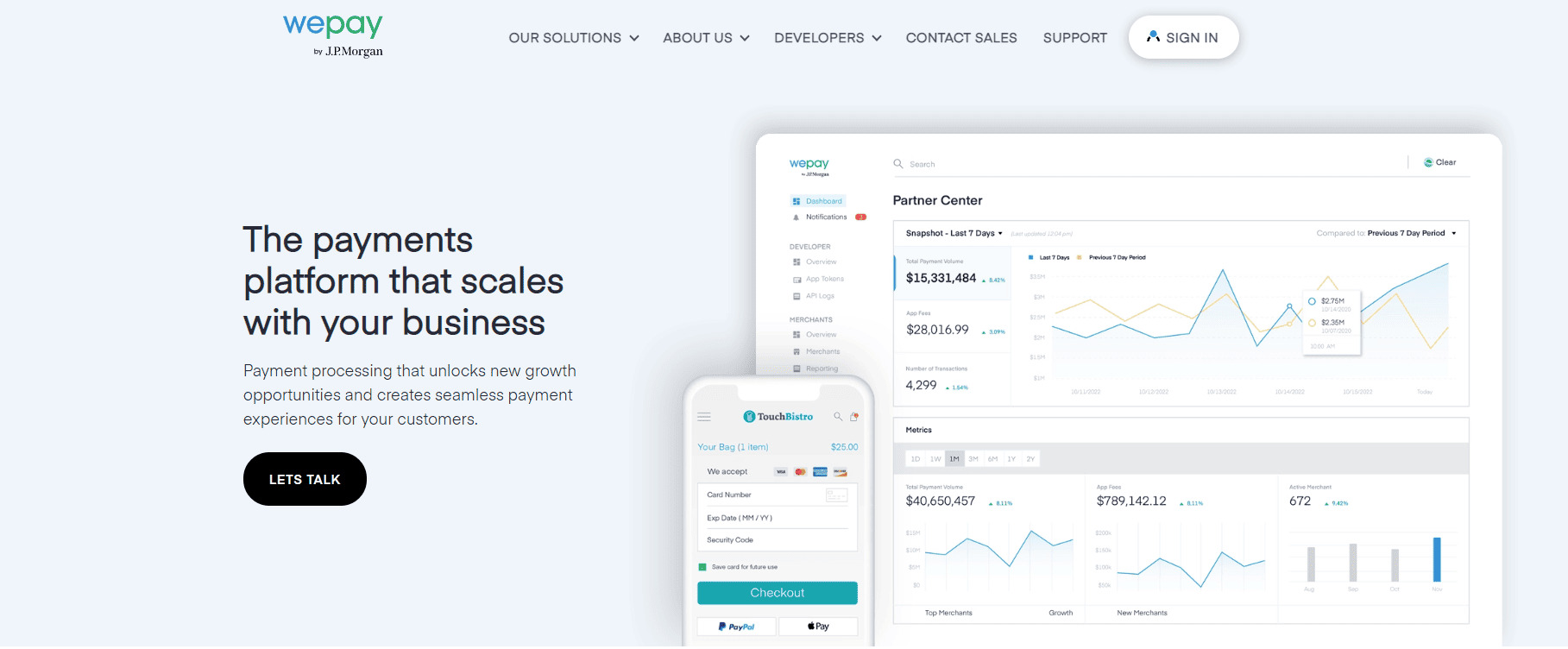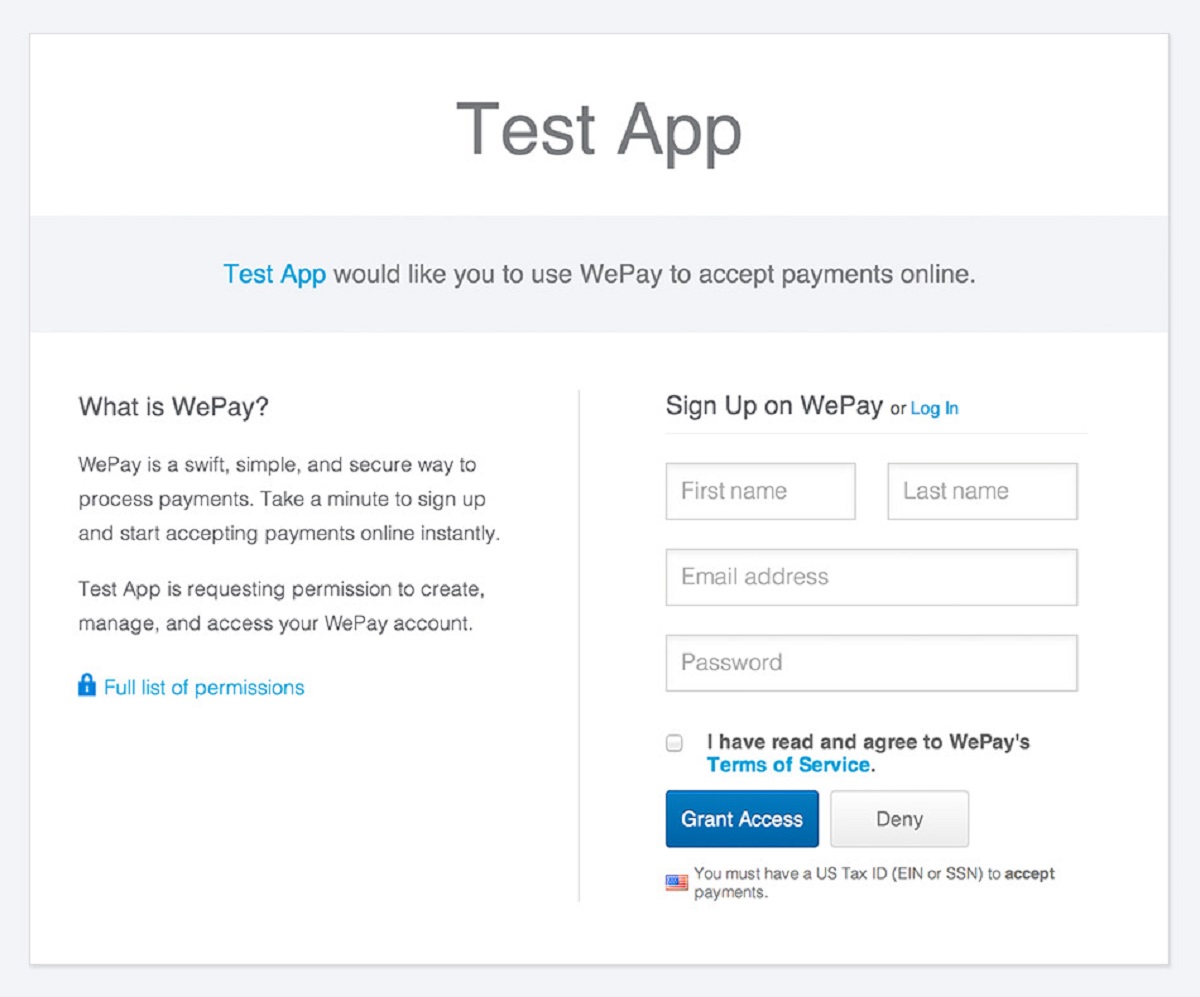Introduction
Welcome to the world of online payments! As a business owner, one of the key challenges you may face is the risk of chargebacks. Chargebacks occur when customers dispute a transaction and request a refund directly from their bank or credit card provider. While chargebacks are a common occurrence in the online payment sphere, they can have serious implications for your WePay account and your business’s financial stability.
In this article, we will explore the concept of chargebacks, their impact on your WePay account, and provide you with valuable tips to prevent chargebacks and maintain a healthy payment processing environment.
Understanding the cause of chargebacks is crucial in implementing effective prevention strategies. Whether it’s due to misunderstandings, fraudulent activity, or dissatisfied customers, chargebacks can significantly impact your revenue and reputation. By taking proactive measures to minimize the occurrence of chargebacks, you can protect your WePay account and ensure a smooth payment experience for your customers.
Through clear communication, excellent customer service, secure payment processing methods, and diligent monitoring of transactions, you can significantly reduce the risk of chargebacks. It’s important to foster trust and transparency in your customer relationships to minimize misunderstandings and provide swift resolutions to any potential disputes.
This article will guide you through ten practical steps you can take to prevent chargebacks on your WePay account. By following these tips, you will not only protect your business finances but also provide a seamless and secure payment experience for your customers.
Now, let’s dive deeper into the world of chargebacks and equip you with the knowledge to keep them at bay.
Understanding Chargebacks
Before we delve into prevention strategies, it’s important to have a clear understanding of what chargebacks are and why they occur. A chargeback is a dispute initiated by the cardholder who requests a refund from their bank or credit card provider. If the cardholder’s claim is validated, the disputed amount is returned to their account while it is deducted from yours. This process bypasses your WePay account and can have substantial financial consequences.
Chargebacks can happen for various reasons, including:
- Fraudulent transactions: Some customers may use stolen credit card information to make purchases. As the merchant, you may not be aware of this until a chargeback is initiated.
- Customer disputes: Customers may dispute a charge if they believe the product or service was misrepresented, or if they didn’t receive what they expected.
- Technical issues: Sometimes, technical glitches or errors can result in double charges or incorrect billing amounts, leading to chargeback requests.
- Unrecognized transactions: Customers may not recognize a charge on their statement, leading them to initiate a chargeback without realizing they made the purchase.
As a merchant, it’s important to be aware of these potential triggers for chargebacks and take steps to minimize their occurrence. Chargebacks can not only result in financial loss, but they can also damage your reputation and affect your ability to process future payments. By understanding the reasons behind chargebacks, you can implement proactive measures to prevent them from happening in the first place.
In the next section, we will explore the impact of chargebacks on your WePay account and why it’s crucial to take necessary precautions. By understanding the consequences, you’ll be motivated to implement the preventive strategies we’ll discuss later in this article. Stay tuned!
Common Reasons for Chargebacks
In order to effectively prevent chargebacks, it’s essential to familiarize yourself with the common reasons why customers initiate chargeback requests. By understanding these reasons, you can address potential issues and implement preventive measures accordingly. Let’s explore some of the most common causes of chargebacks:
- Unauthorized transactions: One of the primary reasons for chargebacks is when customers claim that the transaction was made without their consent. This can occur due to stolen credit card information or identity theft. It’s crucial to have robust security measures in place to minimize the risk of unauthorized transactions.
- Product or service disputes: Customers may file chargebacks if they are dissatisfied with the quality of the product or service they received. This can happen if the item does not match the description, if it arrives damaged, or if the service did not meet their expectations. Providing clear and accurate product or service information can help minimize disputes.
- Incorrect or duplicate charges: Billing errors such as double charges or incorrect amounts can lead to chargebacks. It’s important to regularly review transactions and promptly address any billing discrepancies.
- Non-received goods or services: If a customer claims that they did not receive the ordered goods or services, they may initiate a chargeback. It’s crucial to have a reliable system in place for tracking and verifying the delivery of goods or the completion of services.
- Subscription-related issues: Chargebacks can also occur in the case of subscription-based services. Customers may forget about recurring charges or feel they were not adequately informed about the terms and cancellation process. Clearly communicating subscription details and offering easy cancellation options can help minimize chargebacks in these cases.
By understanding these common reasons for chargebacks, you can tailor your prevention strategies to address specific issues. Effective communication, providing high-quality products or services, and implementing secure payment processing methods are all vital in minimizing chargebacks and maintaining a positive relationship with your customers.
Now that we’ve explored the reasons behind chargebacks, let’s move on to the next section: understanding the impact of chargebacks on your WePay account. Stay tuned to learn about the consequences and why it’s crucial to take preventive measures.
How Chargebacks Affect Your WePay Account
Chargebacks can have a significant impact on your WePay account, both financially and operationally. It’s important to understand these consequences in order to take proactive measures to minimize the risk of chargebacks. Here are some ways in which chargebacks can affect your WePay account:
- Financial loss: When a chargeback occurs, the disputed amount is deducted from your WePay account, resulting in a financial loss for your business. Additionally, you may incur chargeback fees imposed by WePay for the administrative processing of these disputes.
- Holding of funds: In cases where chargebacks are prevalent, WePay may place a hold on a certain percentage of your funds as a security measure. This hold is intended to cover potential chargeback liabilities and can disrupt your cash flow and financial planning.
- Risk to your account: Excessive chargebacks can put your WePay account at risk of suspension or termination. WePay closely monitors chargeback ratios as part of their risk assessment process. If your account’s chargeback ratio exceeds the acceptable threshold, it may lead to restrictions on your account or, in severe cases, the termination of your WePay account.
- Negative impact on your reputation: Having a high number of chargebacks can tarnish your business’s reputation and credibility. A history of chargebacks can make potential customers hesitant to do business with you, resulting in lower sales and potential damage to your brand image.
- Operational challenges: Dealing with chargebacks requires valuable time and resources. You will need to invest effort in investigating and responding to chargebacks, which can divert your attention from other core business activities.
Understanding the potential consequences of chargebacks on your WePay account emphasizes the importance of implementing preventive measures. By taking proactive steps to prevent chargebacks, you can protect your account, maintain a positive cash flow, and preserve your business’s reputation.
In the upcoming sections, we will explore ten effective tips to prevent chargebacks on your WePay account. These tips will provide you with practical strategies to minimize the occurrence of chargebacks and create a secure and seamless payment experience for your customers. So, let’s dive into the prevention strategies and safeguard your WePay account from the potential risks of chargebacks.
Tips to Prevent Chargebacks on WePay
Preventing chargebacks is crucial for maintaining a healthy payment processing environment on your WePay account. By implementing the following tips, you can minimize the risk of chargebacks and ensure a seamless experience for your customers:
- Clearly Communicate Product/Service Details: Provide detailed and accurate descriptions of your products or services, including features, specifications, and any limitations. This will help set clear expectations and reduce the likelihood of misunderstandings or disputes.
- Provide Excellent Customer Service: Promptly respond to customer inquiries, provide effective support, and ensure that customer expectations are met. Maintaining a positive relationship with your customers can minimize the likelihood of them resorting to chargebacks.
- Use a Clear and Concise Refund Policy: Clearly outline your refund policy on your website, including conditions, timeframes, and procedures. Make it easily accessible to your customers, so they understand the process for requesting refunds, which can reduce the likelihood of chargebacks.
- Utilize Secure Payment Processing Methods: Implement robust security measures to protect customer information during transactions. Use secure payment gateways like WePay that employ encryption techniques and fraud detection systems to minimize the risk of fraudulent transactions.
- Monitor Transactions for Fraudulent Activity: Regularly review transactions for any signs of suspicious behavior or irregularities. Look out for unusual purchasing patterns, multiple transactions from the same IP address, or orders with inconsistent billing and shipping information.
- Keep Accurate and Detailed Records: Maintain proper documentation of all transactions, including invoices, purchase orders, shipping/tracking information, and customer correspondence. This documentation can serve as evidence in case of any chargeback disputes.
- Respond Promptly to Customer Inquiries and Disputes: Address customer inquiries or concerns promptly and professionally. Timely and satisfactory resolutions can help prevent customers from resorting to chargebacks out of frustration.
- Implement Address Verification System (AVS): Use AVS to verify the address provided by the customer matches the billing address associated with the credit card used for payment. This additional layer of verification can reduce the risk of fraudulent transactions.
- Improve Your Website’s Security Measures: Ensure your website has proper security measures in place, such as SSL certificates, to protect customer data during online transactions. Display trust seals and security badges to instill confidence in your customers.
- Conduct Periodic Reviews of Your WePay Account: Regularly review your WePay account for any suspicious activities or indicators of potential chargebacks. Stay updated with WePay’s guidelines and policies to ensure compliance and minimize risks.
By implementing these preventive measures, you can significantly reduce the risk of chargebacks on your WePay account. Remember, proactive management and attention to detail are key in fostering a secure payment environment for your business and providing a positive experience for your customers.
Now that we have explored these tips, you are well-equipped to implement strategies to prevent chargebacks. In the next section, we will provide a summary and offer some concluding thoughts on how to effectively manage chargebacks on WePay. Let’s continue!
Clearly Communicate Product/Service Details
One of the key factors in preventing chargebacks is ensuring that your customers have a clear understanding of the product or service they are purchasing. By effectively communicating product/service details, you can set accurate expectations and reduce the likelihood of misunderstandings or disputes. Here are some tips to help you clearly communicate product/service details:
- Provide Detailed Descriptions: Take the time to craft comprehensive and accurate descriptions of your products or services. Include key details such as features, specifications, dimensions, materials, and any limitations or restrictions. The more information you provide, the better-informed your customers will be.
- Use High-Quality Images: Visuals play a crucial role in showcasing your products. Use high-quality images that accurately represent the product or service. Show multiple angles or variations, if applicable, to give customers a comprehensive view.
- Highlight Key Benefits: Clearly communicate the benefits and unique selling points of your products or services. Explain how they can solve a problem or enhance the customer’s life. By emphasizing the value and benefits, customers will have a better understanding of what they can expect.
- Specify Terms and Conditions: Outline any terms or conditions that apply to the purchase, such as warranties, return policies, or subscription renewals. Be transparent about any additional fees or charges to avoid surprises and potential chargebacks.
- Offer Sizing/Measurement Guides: If applicable, provide sizing or measurement guides for products such as clothing, shoes, or furniture. This can help customers choose the right size or fit, reducing the likelihood of returns or disputes due to incorrect sizing.
- Integrate Customer Reviews/Testimonials: Include customer reviews or testimonials on your website to provide social proof and build trust. Hearing from other satisfied customers can help potential buyers make informed decisions and reduce the likelihood of chargebacks.
- Provide Multiple Contact Channels: Make it easy for customers to contact you in case they have any questions or need additional information. Display your contact information prominently on your website and offer various channels such as email, live chat, or phone support.
By implementing these strategies, you can ensure that customers have a clear understanding of your products or services before making a purchase. Clear communication helps set accurate expectations, reduces the likelihood of misunderstandings or disputes, and ultimately minimizes the risk of chargebacks on your WePay account.
Now that we have discussed the importance of clearly communicating product/service details, let’s move on to the next section, where we will explore the second preventive tip: providing excellent customer service. Offering exceptional customer support plays a crucial role in preventing chargebacks. Let’s dive in!
Provide Excellent Customer Service
Delivering exceptional customer service is a key element in preventing chargebacks. When customers have a positive experience and feel well-supported, they are less likely to resort to filing a chargeback. Here are some tips to help you provide excellent customer service:
- Respond Promptly: Aim to provide timely responses to customer inquiries and concerns. Prompt communication shows that you value your customers and their needs, reducing the likelihood of frustration or impatience that could lead to a chargeback.
- Be Polite and Professional: Always maintain a professional and respectful tone when communicating with customers. This can help diffuse potentially contentious situations and encourage cooperative resolution rather than confrontational chargebacks.
- Actively Listen: Take the time to listen to your customers’ concerns and fully understand their issue or complaint. Showing empathy and understanding can go a long way in resolving conflicts and preventing chargebacks.
- Offer Solutions: Instead of simply acknowledging the problem, provide actionable solutions to address the customer’s issue. Offering alternatives or addressing their concerns promptly can help salvage the relationship and prevent the need for a chargeback.
- Go the Extra Mile: Exceed customer expectations whenever possible. This could include offering personalized recommendations, providing additional information or resources, or offering a small gesture of goodwill to show that you value their satisfaction.
- Train Your Staff: If you have a customer service team, ensure they are well-trained in handling customer inquiries and resolving issues effectively. Consistent and well-informed customer service across all channels can contribute to a positive customer experience.
- Implement a Customer Feedback System: Encourage customers to provide feedback on their experience with your business. Use this feedback to identify areas for improvement and make necessary adjustments to enhance the overall customer service experience.
By providing excellent customer service, you not only reduce the likelihood of chargebacks but also foster loyal customers who are more likely to recommend your business and make repeat purchases. Remember that a positive customer experience can have long-term benefits for your business.
Now that we’ve explored the importance of providing excellent customer service, let’s move on to the next section, where we will discuss the third preventive tip: using a clear and concise refund policy. Having a transparent refund policy is crucial in minimizing chargebacks. Let’s dive in!
Use a Clear and Concise Refund Policy
A clear and concise refund policy is essential in preventing chargebacks and ensuring smooth transactions with your customers. By clearly outlining your refund policy, you set expectations and provide a transparent framework for handling returns or refunds. Here are some tips to help you use a clear and concise refund policy:
- Clearly State Your Terms: Clearly articulate the conditions under which refunds or returns are accepted. Specify the timeframe within which customers can request a refund and outline any specific requirements, such as returning the product in its original condition.
- Make Your Policy Easily Accessible: Display your refund policy prominently on your website, preferably in a place where customers can easily find it. Make it accessible through navigation menus, product pages, or the shopping cart process.
- Use Simple and Easy-to-Understand Language: Avoid complex legal jargon and use plain language to ensure customers can easily understand the terms of your refund policy. Clearly explain the steps they need to follow in order to request a refund.
- Be Transparent About Timeframes: Specify the time period within which customers can expect a refund, whether it’s within a certain number of days, business hours, or upon receipt and verification of the returned product.
- Outline Exceptions or Limitations: Clearly mention any exceptions or limitations to your refund policy. For example, if certain products or services are non-refundable or if there are specific conditions under which refunds are not granted.
- Include Contact Information: Provide clear contact information so that customers can reach out to you with any refund-related inquiries or concerns. This promotes open communication and may prevent customers from resorting to chargebacks when they have questions.
- Train Your Staff: If you have a customer service team, ensure they are well-versed in your refund policy and know how to handle refund-related requests effectively. Consistent and accurate communication can help prevent misunderstandings and chargebacks.
By having a clear and concise refund policy, you establish trust with your customers and provide them with a clear understanding of your processes. This transparency reduces the likelihood of misunderstandings or disputes that could lead to chargebacks.
In the next section, we will explore the fourth preventive tip: utilizing secure payment processing methods. Implementing secure payment methods is crucial in minimizing the risk of fraudulent transactions and chargebacks. Let’s dive in!
Utilize Secure Payment Processing Methods
Using secure payment processing methods is essential in preventing chargebacks and protecting your customers’ sensitive financial information. By implementing robust security measures, you can minimize the risk of fraudulent transactions and unauthorized access to customer data. Here are some tips to help you utilize secure payment processing methods:
- Choose a Trusted Payment Gateway: When selecting a payment gateway, opt for well-established and reputable providers that prioritize security. WePay is a trusted payment gateway that offers advanced security features to help safeguard your transactions.
- Encryption and Data Protection: Ensure that your payment processing system uses industry-standard encryption protocols (such as SSL) to protect customer data during transmission. This prevents unauthorized individuals from intercepting and accessing sensitive information.
- Tokenization: Consider utilizing tokenization, which replaces the customer’s credit card number with a unique token. This helps minimize the storage of sensitive data, reducing the risk of potential breaches and unauthorized access to customer information.
- Fraud Detection and Prevention: Implement fraud detection tools and systems that can help identify and block suspicious transactions. These tools employ algorithms and machine learning to detect patterns and anomalies that may indicate fraudulent activity.
- Two-Factor Authentication (2FA): Utilize two-factor authentication for added security. This requires customers to provide an additional verification step, such as a unique code or fingerprint, before completing a transaction.
- Stay Updated on Security Patches: Regularly update your payment processing software and plugins to ensure you have the latest security patches. This helps protect against any known vulnerabilities that hackers may exploit.
- PCI DSS Compliance: Ensure that your payment processing system is Payment Card Industry Data Security Standard (PCI DSS) compliant. This set of security standards ensures that your business follows best practices in handling and storing customer payment information.
- Monitor and Analyze Transactions: Keep a close eye on transactions and look for any signs of suspicious or unusual activity. This includes monitoring for high-value transactions, repeated transactions from the same IP address, or transactions that deviate from the customer’s usual purchase behavior.
By utilizing secure payment processing methods, you provide customers with peace of mind and reduce the risk of chargebacks resulting from fraudulent transactions. Implementing these security measures not only protects your customers but also safeguards your business’s reputation and financial security.
In the next section, we will discuss the fifth preventive tip: monitoring transactions for fraudulent activity. Stay tuned to learn how you can detect and prevent fraudulent transactions effectively!
Monitor Transactions for Fraudulent Activity
Monitoring transactions for fraudulent activity is crucial in preventing chargebacks and protecting your business from financial losses. By implementing effective monitoring practices, you can identify and respond to potential fraudulent transactions promptly, reducing the risk of chargebacks. Here are some tips to help you monitor transactions for fraudulent activity:
- Set Up Fraud Detection Systems: Utilize fraud detection tools and systems that can automatically analyze transactions and identify potential fraudulent activity. These systems use algorithms and machine learning to detect patterns and anomalies that may indicate fraudulent behavior.
- Monitor Unusually Large Purchases: Keep an eye out for transactions with unusually large order values compared to your typical sales. Fraudsters may attempt to make large purchases to maximize their gains before their fraudulent activity is detected.
- Watch for Multiple Orders from the Same IP Address: Be vigilant about transactions originating from the same IP address. Fraudsters may use multiple stolen credit cards to place multiple orders, all coming from the same source.
- Pay Attention to Suspicious Purchase Behavior: Look for transaction patterns that deviate from the customer’s regular behavior. For example, multiple high-value orders placed within a short period of time or orders shipped to different addresses but using the same payment information.
- Verify Billing and Shipping Information: Ensure that the billing and shipping information provided by the customer matches and is consistent. Mismatches or inconsistencies may be indicators of fraudulent activity.
- Implement Address Verification System (AVS): Utilize AVS to verify that the billing address provided matches the registered billing address associated with the customer’s credit card. AVS can help verify the legitimacy of the transaction and reduce the risk of chargebacks.
- Require CVV Verification: Request the CVV (Card Verification Value) code for each transaction. This three-digit code, typically found on the back of credit cards, adds an extra layer of security by verifying that the customer has the physical card in their possession.
- Educate Your Team: Train your employees to recognize potential signs of fraudulent activity and provide them with guidelines on how to handle suspicious transactions. Encourage them to report any concerns or anomalies they notice during the transaction process.
By actively monitoring transactions for fraudulent activity, you can detect and prevent potential chargebacks before they occur. Identifying and addressing fraudulent transactions not only protects your business from financial losses but also helps maintain the trust and confidence of your legitimate customers.
In the next section, we will discuss the importance of keeping accurate and detailed records to prevent chargebacks. Stay tuned to learn how proper documentation can help you handle disputes more effectively!
Keep Accurate and Detailed Records
Keeping accurate and detailed records is essential in preventing chargebacks and effectively managing disputes. Proper documentation allows you to provide evidence and resolve customer inquiries or disputes more efficiently. Here are some tips to help you keep accurate and detailed records:
- Maintain Order and Transaction Records: Keep a comprehensive record of all customer orders and transactions. This includes invoices, purchase orders, receipts, shipping information, and any additional documentation related to the transaction.
- Document Communication with Customers: Maintain records of all communication with customers, including emails, chat logs, or phone call recordings. These records can help in resolving disputes by providing a clear timeline and reference point for discussions or agreements.
- Take Screenshots or Save Web Forms: Capture screenshots of the checkout process, order confirmation pages, and any additional forms filled out by the customer during the purchase. These records can be valuable evidence in case of disputes or chargebacks.
- Track Delivery and Return Shipping: Keep thorough records of product deliveries, including tracking numbers and proof of delivery. If returns are involved, document the return shipping process, including tracking numbers and confirmation of receipt of returned items.
- Organize Records by Date and Customer: Establish a systematic process for organizing records, ensuring easy retrieval and reference. Organizing records by date and customer can streamline the resolution process and assist in providing accurate information quickly.
- Store Records Securely: Implement secure storage solutions for safeguarding customer information and transaction records. Utilize password-protected systems or cloud storage with encryption to protect sensitive data from unauthorized access.
- Regularly Audit and Update Records: Conduct periodic audits of your records to ensure accuracy and completeness. Update records promptly when changes or adjustments occur, such as returns, refunds, or customer inquiries.
- Backup Your Data: Regularly back up your records to prevent data loss or corruption. Consider automatic backups or cloud-based solutions to ensure your records are protected and accessible even in the event of hardware failure or other emergencies.
By keeping accurate and detailed records, you have a comprehensive overview of your transactions and interactions with customers. This documentation acts as a valuable resource in resolving disputes and providing evidence if a chargeback occurs.
In the next section, we will discuss the importance of responding promptly to customer inquiries and disputes. Timely communication can help prevent chargebacks and maintain a positive relationship with your customers. Let’s dive in!
Respond Promptly to Customer Inquiries and Disputes
Responding promptly to customer inquiries and disputes is crucial in preventing chargebacks and maintaining positive customer relationships. Quick and effective communication can help address customer concerns, resolve issues, and prevent escalations that could lead to chargebacks. Here are some tips for responding promptly to customer inquiries and disputes:
- Set Clear Expectations: Clearly communicate your response timeframes to customers. Let them know when they can expect a response, whether it’s within a specific number of business hours or a certain timeframe.
- Implement a Ticketing System: Use a ticketing system or customer support software to track and prioritize customer inquiries. This ensures that inquiries are not overlooked or delayed, and allows you to respond in a timely manner.
- Designate a Dedicated Support Team: Assign a dedicated team or individual responsible for handling customer inquiries and disputes. This helps ensure consistent and prompt responses to customer concerns.
- Use Automation and Templates: Utilize automation tools and pre-made templates to streamline response times. Standardized templates can be customized to provide personalized responses while saving time in drafting each response from scratch.
- Show Empathy and Understanding: Acknowledge the customer’s concerns, show empathy, and demonstrate understanding of their frustrations or issues. This helps build rapport and reassures the customer that you genuinely care about resolving their problem.
- Offer Timely Updates: Keep the customer informed of the progress or status of their inquiry or dispute. Regular updates can alleviate anxiety and assure the customer that their concern is being addressed.
- Escalate Complex Issues: If an inquiry or dispute requires additional investigation or expertise, escalate it to the appropriate team within your organization. Communicate this escalation to the customer and provide them with an estimated timeframe for resolution.
- Keep a Centralized Knowledge Base: Maintain a centralized knowledge base or FAQ section on your website. This serves as a self-help resource for customers and can provide immediate answers to common inquiries, reducing the need for direct assistance.
- Document All Interactions: Keep detailed records of all interactions with customers, including timestamps and a summary of the discussion. This documentation helps ensure accurate and consistent communication, and is valuable in case of escalations or chargeback disputes.
Responding promptly to customer inquiries and disputes demonstrates your commitment to providing excellent customer service. By addressing concerns quickly and effectively, you can often resolve issues before they escalate to chargebacks. Remember, timely and attentive communication is key to maintaining positive customer relationships and minimizing the risk of chargebacks.
In the next section, we will discuss the importance of implementing an Address Verification System (AVS) to prevent chargebacks. Stay tuned to learn how AVS can help reduce the risk of fraudulent transactions!
Implement Address Verification System (AVS)
Implementing an Address Verification System (AVS) is an effective measure in preventing chargebacks by verifying the accuracy of the billing address provided during a transaction. AVS compares the address entered by the customer with the address on file with the credit card issuer. By incorporating AVS into your payment processing system, you can minimize the risk of fraudulent transactions and chargebacks. Here’s how you can benefit from implementing AVS:
- Reduced Risk of Fraudulent Transactions: AVS helps verify that the billing address provided by the customer matches the address associated with the credit card. By confirming this match, you can identify potential cases of fraud. If the addresses don’t match, it could indicate that the transaction is not authorized.
- Enhanced Security: AVS adds an extra layer of security to your payment processing system by providing a mechanism to verify the legitimacy of the transaction. This verification process helps protect both your business and your customers from fraudulent activities.
- Minimized Chargebacks: By implementing AVS, you can significantly reduce the risk of chargebacks resulting from unauthorized or fraudulent transactions. The verification process provides assurance that the transaction is valid, reducing the likelihood of customers disputing the charge.
- Prevention of Shipping Errors: AVS can also help prevent shipping errors by verifying the accuracy of the shipping address. This reduces the chances of products being sent to the wrong address due to input errors or attempted fraud.
- Customizability and Flexibility: AVS allows you to customize the verification settings based on your specific requirements. Depending on the level of security you desire, you can choose to decline transactions with mismatches or implement secondary verification steps to further verify the customer’s identity.
- Compatibility with Major Payment Gateways: AVS is widely supported by major payment gateways, including WePay, making it easy to integrate into your existing payment processing system.
Implementing AVS as part of your payment processing system can significantly enhance the security of your transactions and minimize the risk of chargebacks. By verifying the accuracy of billing addresses, you can deter fraudsters and provide a safer environment for your customers to make purchases.
In the next section, we will discuss the importance of improving your website’s security measures to prevent chargebacks. Stay tuned to learn how you can enhance the overall security of your online transactions!
Improve Your Website’s Security Measures
Enhancing your website’s security measures is crucial in preventing chargebacks and protecting both your business and your customers from potential fraud or data breaches. By implementing robust security measures, you can create a secure environment for online transactions and instill confidence in your customers. Here are some tips to improve your website’s security measures:
- Use SSL Encryption: Install an SSL (Secure Sockets Layer) certificate on your website to encrypt data transmitted between your customers’ browsers and your server. This ensures that sensitive information, such as credit card details, is securely transmitted and protected from unauthorized access.
- Implement Firewall Protection: Utilize a firewall for added protection against unauthorized access and malicious attacks. A firewall acts as a barrier between your website and potential threats, filtering out suspicious network traffic and preventing unauthorized access attempts.
- Keep Software Updated: Regularly update your website’s content management system, plugins, themes, and any other software used. These updates often include security patches that address vulnerabilities and protect against potential exploits.
- Require Strong Passwords: Enforce strong password policies for user accounts on your website. Encourage the use of complex passwords that include a combination of uppercase and lowercase letters, numbers, and special characters.
- Limit Failed Login Attempts: Implement measures to limit the number of failed login attempts, such as locking an account after a certain number of unsuccessful login attempts. This helps prevent brute-force attacks that attempt to guess passwords.
- Use Captcha or ReCAPTCHA: Integrate captcha or reCAPTCHA challenges into your website’s login, contact, or checkout forms. These tools help verify that the user is a human and not a malicious bot attempting to exploit vulnerabilities.
- Regularly Backup Your Website: Perform regular backups of your website’s data and files. Store the backup securely in an off-site location to ensure that, in the event of a security breach or data loss, you can quickly restore your website to a previous secure state.
- Monitor Website Traffic: Regularly monitor your website’s traffic for suspicious activity or unusual patterns. This can help identify potential attacks or unauthorized access attempts in real-time.
- Employ Two-Factor Authentication (2FA): Implement two-factor authentication for website logins, adding an extra layer of security by requiring a unique code or verification token in addition to the user’s password.
- Provide Security Information: Display security badges, SSL certificates, or any other security-related information prominently on your website. This reassures customers that their data is secure and builds trust in your website.
Investing in improving your website’s security measures not only helps prevent chargebacks but also protects your customers’ sensitive information. By creating a secure online environment, you can instill confidence in your customers, encourage repeat business, and foster long-term relationships.
In the next section, we will discuss the importance of conducting periodic reviews of your WePay account. Stay tuned to learn how regular reviews can help identify potential risks and ensure the security of your payment processing system.
Conduct Periodic Reviews of Your WePay Account
Regularly reviewing your WePay account is an important step in preventing chargebacks and maintaining the security of your payment processing system. By conducting periodic reviews, you can identify potential risks, address any issues promptly, and ensure that your account is operating smoothly. Here are some tips for conducting periodic reviews of your WePay account:
- Review Account Settings: Regularly review and update your account settings in WePay to ensure they align with your business requirements and security preferences. Verify that your account information, such as contact details and business information, is accurate and up to date.
- Monitor Transaction Activity: Keep a close eye on your transaction history and monitor for any unusual or suspicious activity. Look for patterns that may indicate potential fraud, such as frequent chargebacks or a sudden spike in high-value transactions.
- Check Account Notifications: Regularly review any notifications or alerts sent by WePay regarding changes or updates to their policies, security measures, or system requirements. Stay informed about any potential risks or necessary actions for your account.
- Stay Informed about Compliance: Familiarize yourself with WePay’s compliance requirements and guidelines. Ensure that your business operations and website align with these requirements to minimize the risk of account restrictions or terminations due to non-compliance.
- Verify Integration and APIs: If you use WePay integrations or APIs on your website or application, periodically review their functionality and ensure they are updated to the latest versions. This helps ensure a seamless and secure connection between your website and WePay.
- Conduct Risk Assessments: Conduct periodic risk assessments of your business operations, especially if you deal with higher-risk products or services. Identify potential areas of vulnerability and implement additional security measures or fraud prevention strategies as needed.
- Stay Educated on Fraud Prevention: Stay updated on the latest fraud prevention techniques, security best practices, and emerging trends in payment fraud. This knowledge can help you proactively address potential risks and prevent chargebacks.
- Review Customer Feedback: Pay attention to customer feedback and take it into account during your periodic reviews. Analyze any recurring issues or concerns raised by customers and identify areas for improvement or further investigation.
- Audit Documentation and Records: Conduct regular audits of your transaction records, documentation, and communication with customers. Ensure that all records are accurate, up to date, and stored securely. Address any discrepancies or missing information promptly.
- Stay in Touch with WePay Support: Maintain open lines of communication with WePay’s customer support team. Seek clarification on any concerns or questions you may have about your account or security measures. They can provide valuable guidance and assistance to help you maintain a secure payment environment.
By conducting periodic reviews of your WePay account, you can proactively address any potential risks, ensure compliance, and maintain the security and integrity of your payment processing system. Regular assessments and adjustments help you stay ahead of potential problems and provide a seamless and secure experience for both you and your customers.
Now that we have explored these ten tips to prevent chargebacks on your WePay account, you are equipped with valuable strategies and best practices. By implementing these steps and prioritizing security, you can minimize the risk of chargebacks and maintain a smooth and reliable payment processing system.
Conclusion
Preventing chargebacks on your WePay account is of utmost importance for maintaining a secure and successful online payment environment. By implementing the tips discussed in this article, you can significantly reduce the risk of chargebacks and protect your business finances. Let’s summarize the key points:
First, understanding chargebacks and their common causes is crucial for implementing effective preventive measures. By familiarizing yourself with the reasons behind chargebacks, you can tailor your strategies to address specific issues and minimize disputes.
Clear communication of product or service details, coupled with excellent customer service, plays a vital role in preventing chargebacks. By providing accurate and comprehensive information, addressing customer concerns promptly, and establishing trust, you can reduce the likelihood of disputes or dissatisfaction that may lead to chargebacks.
Using a clear and concise refund policy ensures transparency and minimizes misunderstandings between you and your customers. Clearly outline your refund terms and conditions, making it easily accessible to customers to avoid any potential chargeback disputes.
Utilizing secure payment processing methods, such as WePay, helps safeguard transactions, protect customer information, and reduce the risk of fraudulent activity leading to chargebacks. By employing fraud prevention tools, encryption techniques, and validation systems, you can enhance transaction security and build trust with your customers.
Monitoring transactions for fraudulent activity, keeping accurate and detailed records, and responding promptly to customer inquiries and disputes are key components in preventing chargebacks. These practices demonstrate your commitment to resolving customer concerns and provide you with valuable documentation to handle disputes effectively.
Implementing an Address Verification System (AVS) and improving your website’s security measures further enhance protection against fraudulent transactions and data breaches, minimizing chargeback risks. By conducting periodic reviews of your WePay account, you can stay informed, address potential vulnerabilities, and ensure compliance with security measures.
By following these tips, you can create a secure payment processing environment, reduce the risk of chargebacks, and foster positive customer relationships. Remember, maintaining open lines of communication, staying vigilant, and adapting to evolving security measures are essential in preventing chargebacks and maintaining the integrity of your WePay account.
Now it’s time to put these strategies into action and take proactive steps to protect your WePay account from chargebacks. By prioritizing security, customer satisfaction, and clear communication, you can create a seamless payment experience for your customers while safeguarding your business’s financial stability. Good luck!







